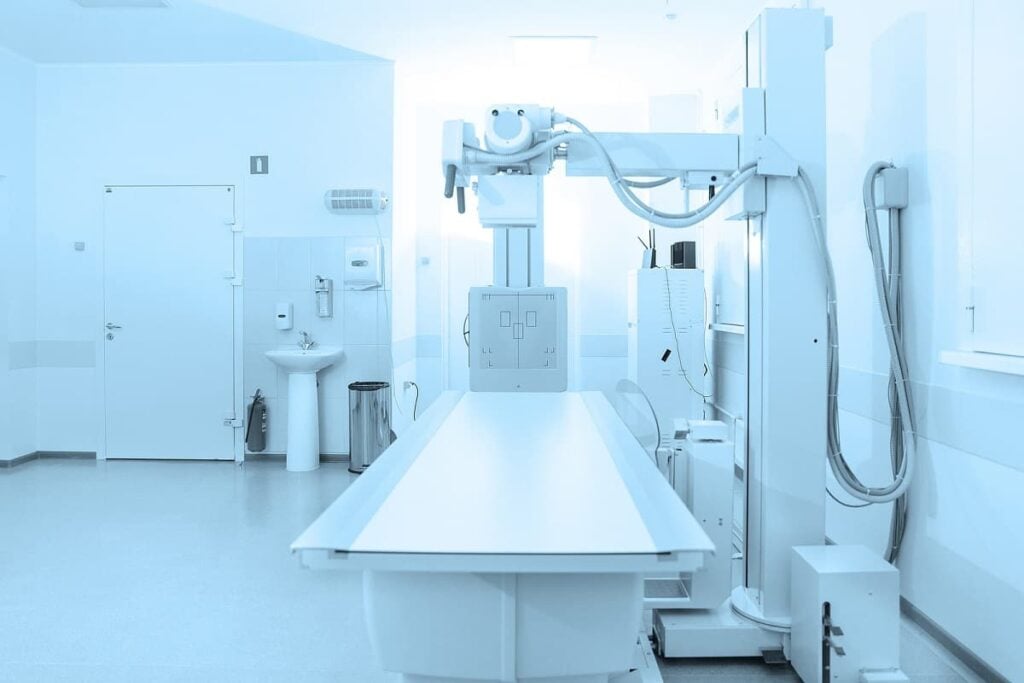Is iRhythm Stock a Buy at Today’s Prices?
Table of contents

For quality tech stocks that have traction, the original thesis doesn’t change much over time. Sometimes, a good company will have a bad quarter, and the stock price will drop -30%, presenting a possible buying opportunity. That’s how we ended up holding shares of Alteryx and Splunk, two purchases that were quite hypocritical considering how much we point out the futility of trying to time the market. When shareholders punished these two companies for letting The Rona slap them around a bit, we stepped in with strong hands, assured that these setbacks were only temporary. But what if a more fundamental problem affects a thesis?
One of the life sciences stocks on our “like” list, iRhythm (IRTC), recently had a Medicare pricing decision which made their stock price hit the skids. It’s now down over -60% year-to-date.

It’s been nearly two years since we first looked at the company, but we’ve never pulled the trigger on shares. (We just said “we liked them” and tried to be as vague as possible because we were busy getting our report built.) Today, shares of iRhythm are around the same price they were several years ago. If there ever was a time to start accumulating the stock, it would be now. Let’s start by looking at what attracted us to the stock in the first place.
About iRhythm
The last time we looked at the company was back in June 2019 when we wrote about iRhythm Stock – A Play on Cardiac Monitoring and AI. Their core offering is a medical device that facilitates “mobile cardiac telemetry,” the ability to monitor the heart over a sustained period of time outside of the doctor’s office.

Data from these medical devices are used to train AI algorithms which offer up an interpretation that matches the physicians’ interpretation 99.9% of the time. In our report, we fawned over their impressive revenue growth – a +57% CAGR for the period of 2014-2019. That growth continued through 2020 as they weathered The Rona quite well.

The simple valuation ratio we’ve been slipping into articles lately shows that today’s price would hardly be considered rich in the enterprise software space, but might be when compared to some of the world’s biggest medical device companies. Here’s that ratio for a number of medical device companies (market cap in billions / (last reported quarterly revenue number in billions X 4)):
- iRhythm (2.65 / .315) = 8.4
- Medtronic (170 / 31) = 5.5
- Stryker (97 / 17) = 5.7
- BD (76 / 21) = 3.6
- JNJ (427 / 90) = 4.7
The smaller the number, the lower the growth expectations are. The large companies that iRhythm is being compared to will find it hard to grow revenues at double-digit rates because of their size and diversified business lines, so we should be giving iRhythm a growth premium. Again, we see that trying to value companies using ratios tells us both something and nothing. Let’s talk about why iRhythm stock dropped so sharply several days ago.
The Medicare Reimbursement Problem
Almost half of our readers hail from outside America, so we’ll start at the top. Medicare is a national health insurance program in the United States with 61 million members (about 18.6% of the population). Around 27% of iRhythm’s 2020 revenues came from Medicare, and nearly all of those sales will be affected by a reduction in reimbursement rates – which was reported as an increase – which makes the whole thing quite confusing. In order to make sense of it, we teased out the background story from their recent 10-K filing.
It seems to start in January 29, 2021, when Novitas Solutions, the company that determines reimbursement rates in Houston, Texas where almost all of their Medicare services for Zio XT (iRhythm’s long-term continuous monitor) are processed, published rates for 2021 that were significantly below the historical Medicare rates for Zio XT. The company said in their February 10-K:
We are in the process of negotiating with Novitas to establish higher pricing.[.] If the published rates by Novitas remain unchanged or are not significantly improved for the CPT codes listed above, thereby allowing us to obtain adequate Medicare reimbursement for the Zio service in the future, we may be unable to provide the Zio XT service or would experience a significant loss of revenue, either of which would have a material adverse effect on our cash flows, results of operations, and financial condition.
Credit: iRhythm
And that’s exactly what happened. The new rates were higher than the ones offered up in January, but they weren’t good enough for iRyhthm. Says the company’s President and CEO:
Due to the cost of providing the service relative to the updated rates published by Novitas, iRhythm will not be able to provide its Zio® XT service to the Medicare fee for service segment if these rates remain unchanged.
Credit: iRhythm
The press release clearly states the impact the revised rates will have on revenues, and it’s not nearly as bad as we thought. If the new rates were effective throughout 2020, iRhythm’s total revenue impact was a decrease of 15.6%.

Even with the reduction in reimbursement rates taking effect at the beginning of 2020, iRhythm still would have had year-over-year revenue growth, and there’s no reason they can’t make that happen in 2021. The only way that won’t happen is if they decide they’re going to leave revenues on the table as if to say “since things didn’t go my way in the negotiation, so I don’t want to do business with you.” According to the press release, that’s exactly what they’re planning to do, except for a “small percentage” of Medicare revenues that will still be maintained due to being on a different pricing schedule.
As potential investors in the stock, we’re not liking any decision that suggests voluntarily reducing revenues. Capturing total addressable market (TAM) should be a priority above all else, with profitability to come down the road when you have dominant market share. Not being able to service a good chunk of your $1.8 billion U.S. TAM is a real concern.
The rate change also showed how geographically concentrated they are right now, at least when it comes to Medicare revenues. While the BSD energy on display is admirable, we would prefer they not make a big deal out of it. Instead, they’re saying (checks notes) that they plan to take actions that will reduce revenues a lot more than they already have been by the reimbursement rates.
Let’s assume this ends up becoming a non-issue and we’re barking up the wrong tree with our Adderall-fueled afternoon assessment of the company’s press release and latest 10-K. Maybe it’s all just a bunch of saber-rattling. The question remains, do we think iRhythm should occupy position number 32 in our disruptive tech stock portfolio?
To Buy or Not to Buy
There are a few reasons why we’re not going long on iRhythm. It’s not just because we’re fearful about a market that hasn’t properly digested the impact of a global event that’s destroyed trillions of dollars in value. It’s also because this is as much a play on medical devices as it is big data and AI.
In taking a holistic view of all our investments, we already have a healthy amount of exposure to medical devices. Our 30-stock dividend growth portfolio holds two of the world’s biggest medical device companies – Stryker (SYK) and Medtronic (MDT) – not to mention Johnson & Johnson (JNJ) which is about 28% exposed to medical devices based on 2020 revenues. If we take 28% of our JNJ position and add it to our other two medical device positions, collectively they account for 8.5% of our DGI portfolio. That’s plenty of medical device exposure, and we don’t see the need to add to it, especially with a niche play. There’s an expectation now that you’re generating big data from your medical devices and using machine learning to add value. You can bet all the big medical device makers are doing that now, so it’s not as if we’re getting some special “big data / AI” exposure from iRhythm.
The Medicare setback will tone back revenue growth, something that’s presumably been priced in already. iRhythm talks about a $1.8 billion total addressable market in their investor deck, and they’ve already captured 17.5% of that based on 4Q-2020 revenues annualized (multiplied by four, in other words). The whole Medicare showdown hints at how complex it can be to navigate the world of medical devices. Uncertainty creates lots of volatility as information suddenly becomes available and the market digests it. That’s why we prefer to stick with the big companies that have a portfolio of medical devices.
Conclusion
We’re less concerned about iRhythm’s slowing revenue growth and more concerned about the “small” TAM they’re targeting of $1.8 billion with a niche product. Still, it’s a disruptive medical device that generates large amounts of big data which can be used to train AI algorithms. The investment thesis today would be to open a position and wait for the inevitable exit when a larger medical device company acquires them as a bolt-on acquisition.
Given we already have meaningful exposure to medical devices, this is a stock we like, but won’t invest in. This is the moment of truth, and we’re going to pass in favor of other companies we’d rather spend our limited manpower researching. We’ll be removing iRhythm from our tech report, while keeping it in our stock catalog as a “like.” There’s nothing wrong with the company per se, it just doesn’t mesh well with our current holdings.
Want to see what four life sciences stocks we’re holding that aren’t medical device companies? Become a Nanalyze Premium annual subscriber and find out today.

Sign up to our newsletter to get more of our great research delivered straight to your inbox!
Nanalyze Weekly includes useful insights written by our team of underpaid MBAs, research on new disruptive technology stocks flying under the radar, and summaries of our recent research. Always 100% free.















Angle
The company claims that looking for tumour cells in liquid blood has advantages over tissue biopsies. One of the claims is that it can capture intact cancer cells and the company believes long term monitoring of circulating tumour cells will prove ‘highly attractive’ to the pharmaceutical industry searching for new insights in cancer drug trials.
We previously covered them: https://nanalyze.com/2016/06/angle-liquid-biopsy-stock-sale-brexit/
I don’t think we’ll do an update because we already have enough liquid biopsy exposure at the moment. Really hope that Illumina can navigate the regulatory hurdles and get the Grail deal closed.